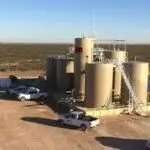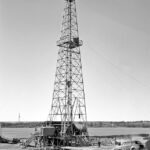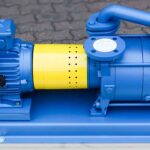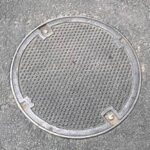An oil-water separator is a piece of static equipment that separates oil and water mixtures into their components. Surface water that drains into a watercourse or underground waters is usually contaminated by oil, chemicals, or suspended solids which cause a serious environmental hazard. Environment Regulators and Agencies provide guidelines for surface water disposal.
If the oil is not separated from the water before discharging, it may disrupt the ecological systems and can cause serious harm to plants, animals, and even humans. So, to control this environmental pollution, oil-water separators play an important role. In this article, we will learn more about oil-water separators, their applications, working, and types.
How does Oil mix into the water?
There are various means by which oil can get mixed with water. Some of these means are:
- Leakages from vehicles
- Accidental spillage
- Leakages from industries
- Effluent washing from vehicles and industrial processes.
This water must be treated properly before discharging and the oil must be separated.
Codes and Standards for Oil Water Separators
The governing codes and standards that provide criteria and guidelines for oil-water separators are:
- BS EN 858-1 and 858-2
- ASTM D6104/D6157
- DIN 86735
- ASME PTC 12.4
- API 12J
- API 421
- ULC CAN-S656
Oil Water Separator Classes
Depending on the separation concentration performance under test conditions, there are two classes of oil-water separators:
Class-I oil-water separators:
These types of oil-water separators are designed to achieve a concentration of less than 5 mg/l of oil under standard test conditions. When there is a requirement to remove very small oil droplets, this class of water oil separators is used.
Class-II oil-water separators:
This type of oil-water separator is designed to achieve a concentration of less than 100 mg/l oil under standard test conditions. Class II oil separators find their application when the separation quality requirement is low. Typical uses of these separators are effluent passes to foul sewer.
Both classes, Class-I, and class-II oil separators are manufactured as full retention or bypass separators.
Full Retention Oil Water Separators:
This type of oil-water separator treats the full flow before being delivered by the drainage system.
Bypass Oil Water Separators:
In the bypass separators, a certain percentage of flow is bypassed without fully treating. In general, all flows generated by rainfall rates of up to 6.5mm/hr are fully treated by this type of water oil separator. When a little risk is acceptable, full treatment may not be required and bypass oil separators can be used.
Working of Oil Water Separators
Oil-water separators are one of the key components in the wastewater treatment process. The wastewater, after filtering the largest solids, is funneled into the oil-water separator. Here, the wastewater travels across a series of plates installed with an inclination inside the separator. These plates aid in separating oil, water, and sludge into three distinct spaces. The main working philosophy is the density difference. The heavy sludge and suspended solids being heavier drop to the bottom. On the other hand, oil particulates are lighter and rise to the top.
However, the plates perform a special function. When the wastewater passes over the plates, small oil particulates are tumbled over the surface. This step helps to collect the oil particles and form larger globules, increasing buoyancy. This increased buoyancy further helps more of the oil to separate and rise to the top of the water.
The stacked plates increase the surface area over which wastewater must pass. At the same time, the inclination of the plates helps to force the oil up to surfaces to coalesce and form larger particles.
The main parameters that affect the performance of oil-water separators are:
- Oil density
- Water viscosity
- Water temperature
- Oil droplet size
- Discharge water quality desired
- Daily and peak hourly oil-water feed flow
- Feed oil concentration
- Range of likely oil concentrations
Types of Oil Water Separators
Depending on the working philosophy, different types of oil-water separators are found. The most common types of oil-water separators are:
- Coalescing plate separators
- Vertical gravity separators
- Hydrocyclone separators
- Petrol and oil interceptor pits
- Centrifugal oily water separator
- Downhole oil-water separation
- Nutshell filtration
- API oil-water separator
- Gravity plate separator
Coalescing plate separators
Coalescing plate separators are one of the frequently used models. This type of oil-water separator removes oils, grease, and hydrocarbons from wastewater. East to maintain and install, in coalescing oil separators the media packs are positioned in two stages that force the free oil droplets to impinge on the surface area. After impingement on media packs, the oil droplets rise to the surface which is skimmed off into a waste oil container.
Vertical gravity separators
They work by controlling fluid pressure and velocity. Utilizing these velocity and pressure forces, oil and other impurities from the water are separated.
Hydrocyclone oil separators
In this type of oil-water separator, the wastewater is passed through a cyclone chamber where extreme centrifugal forces are applied to separate the oil droplets.
Petrol and oil interceptor pits
This system consists of two or three-compartment gravity flow systems. Petrol and oil interceptor pits work on the philosophy that hydrocarbons, petrol, and diesel float above water due to lower specific gravity. These contaminants are then skimmed off from wastewater.
Centrifugal oily water separator
In this type of oil-water separator, the oil-water mixture is rotated inside a cylindrical container. The denser liquid accumulates at the periphery and is collected from the side of the device.
Downhole oil-water separation
This is an emerging technology where the oil and gas are separated from produced water at the bottom of the well.
Nutshell filtration
In this oil-water separation method, a nutshell media is used that removes the oil.
API oil-water separator
This is a device that separates suspended solids and oil from wastewater effluents. This kind of oil-water separator is designed based on API publication 421, hence the name.
Gravity Plate Separator
In this oil separator, a series of plates are used through which the contaminated water flows. The system allows the oil droplets to coalesce on the underside of the plate which accumulates at the chamber top. This oil is then transferred to a waste oil tank.
Applications of Oil Water Separators
A range of industries uses oil-water separators to achieve compliance with environmental codes. Some of the common businesses that use oil-water separators frequently are:
- Car dealers
- Commercial car washes
- Service stations
- Garages or car workshops.
The industries that widely use oil-water separators are:
- Mining,
- Food processing,
- Construction






